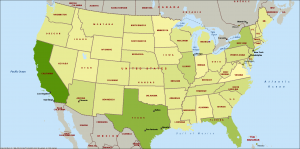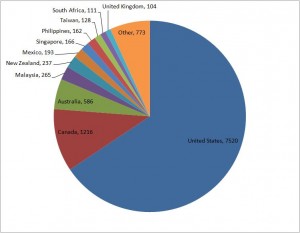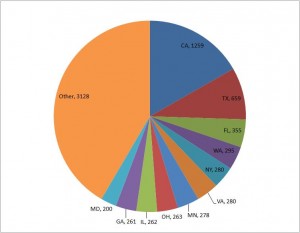How well are we doing with retention of new clubs? I looked at clubs that chartered in the 2007-08 year (two years ago) three different ways, by club type, open/group-specific, and whether they were advanced. (Every Toastmasters club has these three different characteristics; yes, you can have a “company open” club, or a “community group-specific” club.)
Of those clubs chartered two years ago, as of last month, we had lost 20% of the nearly-1000 new clubs (how does that compare to your district?). Out of that, we lost 27% of the company clubs, but just 10% of the community clubs.
Looking at the same clubs a different way, we lost 23% of the group-specific clubs (i.e., closed, or organization-aligned), while we lost just 14% of the open (typically community, but not always) clubs.
Out of 37 advanced clubs chartered that year, we’ve lost just one, 2.7% (it was in Taiwan).
Conclusion: It does appear that closed/company/group-specific clubs are much harder to retain, perhaps 2-3 times higher failure rate, over that first two years, which is the hardest time for a club. Club mentors are so important (though I don’t have data to prove that).
Club type Lost Total Percent Company 148 558 26.52% Community 34 325 10.46% College 6 33 18.18% Other/Specialized 3 24 12.50% Govt Agency 3 32 9.38% Correctional Inst 1 5 20.00% Military 1 3 33.33% Church 1 5 20.00% Open/group specific Group Specific 149 652 22.85% Open 47 332 14.16% Advanced N 195 946 20.61% Y 1 37 2.70%


